by W.S. Cranshaw* (1/18)
Quick Facts…
- Dermestid beetles are common insects that likely can be found in most any home in Colorado.
- Most dermestid beetles are scavengers that develop on materials of animal origin, including dead insects, pet hair, lint, woolen items, furs and feathers. Some are known as “carpet beetles” because they can feed on woolen carpets.
- Some types of dermestid beetles have larvae that develop by feeding on grain or seed-based materials.
- Infestations within a home typically originate from wild populations of beetles that move into homes during warm months.
- Dermestid beetles in buildings are primarily managed by removing foods on which they develop, treating infested items that are kept with heat or cold to kill insects, and storing susceptible material in insect-proof containers.
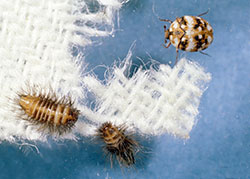
Figure 1: Furniture carpet beetle adult and larvae. Photograph courtesy of Clemson University/Bugwood.org |
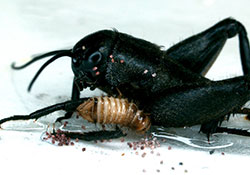
Figure 2: Larvae of a Trogoderma species larvae infesting stored grain material. Photograph courtesy of Joseph Berger, Bugwood.org |
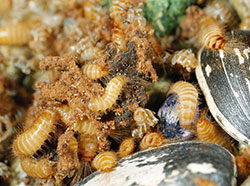
Figure 3: Larvae of a Trogoderma species larvae infesting stored grain material. Photograph courtesy of Jim Kalisch, University of Nebraska |
 
Figure 4: Side view (top) of a Trogoderma species larva; top view (bottom) of a discarded larval skin of a Trogoderma species. Photographs courtesy of Dave Shetlar, The University of Ohio |

Figure 5: Discarded skins of varied carpet beetle larvae following molt. |

Figure 6: Pupa of a varied carpet beetle. Photograph courtesy of Dave Shetlar, The University of Ohio |
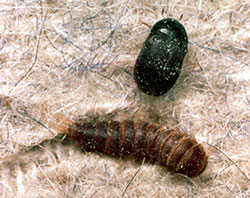
Figure 7: Black carpet beetle adult and larva. Photograph courtesy of Clemson University/Bugwood.org |
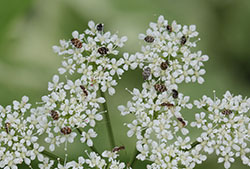
Figure 8: Varied carpet beetles adults feeding on Spirea pollen. |
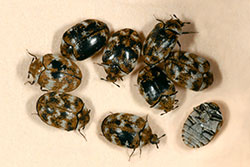
Figure 9: Varied carpet beetles. Photograph courtesy of Jim Kalisch, University of Nebraska |
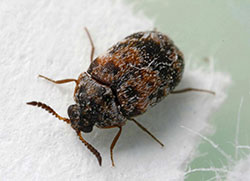
Figure 11: Trogoderma species of dermestid beetle. Photograph courtesy of Joseph Berger/Bugwood.org |
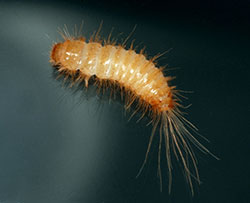
Figure 12: Larva of a warehouse beetle, Trogoderma variabile. Photograph courtesy of Jim Kalisch, University of Nebraska |
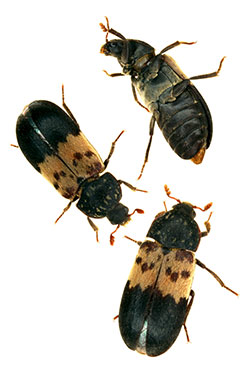
Figure 13: Larder beetles. Photograph courtesy of Jim Kalisch, University of Nebraska |
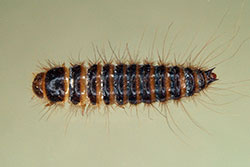
Figure 14: Larva of a larder beetle. Photograph courtesy of Jim Kalisch, University of Nebraska |
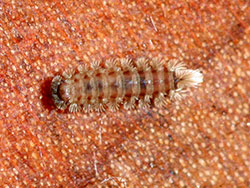
Figure 5: Duff millipede |
Dermestid beetles are probably the most common insects present found in Colorado homes and buildings. They are scavengers that can feed on a wide variety of foods humans provide. Some species of dermestid beetles develop on materials of animal origin, including dead insects, pet hair, lint, woolen items, furs and feathers. Clothing and household furnishings made of wool or fur are occasionally damaged by these insects and some of the more common species are often called “carpet beetles”, reflecting their importance as a pest of woolen carpeting. Fabrics and carpeting made of non-woolen materials are not damaged by dermestid beetles.
Other types of dermestid beetles primarily feed on grain or seed based materials. These are often found in kitchens and pantry areas where susceptible foods are stored and prepared. These types of dermestid beetles may develop anywhere in the building where crumbs of spilled foods are present. They may also be associated with caches of food stored by rodents behind building walls.
Dermestid beetles are commonly found outdoors as well as indoors. Outdoors their scavenging habits have an important role as they consume dead plant and animal materials; dermestid beetles are key players in the “clean-up” crew of insects that help recycle nutrients in natural systems. Infestations that do occur indoors may result from migration of insects from outdoor sites into buildings or through movement of infested food materials.
General Appearance and Habits
Dermestid beetles go through four different stages in their development – an egg, a series of immature stages known as a larva (larvae in plural form), a transition stage known as the pupa, and the adult. Most dermestid beetles lay between 2-4 dozen eggs over a period of a month or so, with the eggs scattered among food material on which they can develop.
Dermestid beetle larvae typically hatch from the eggs within 1-2 weeks after the eggs are laid. The larvae have a generally fuzzy appearance, being covered in hairs. Their body form is generally elongated and in overall color they are reddish or light brown. Some species have distinct tufts or tails of hairs extending from the posterior. Like all insects, the developing larvae repeatedly shed their “skins” (exoskeleton) as they grow – often a dozen times or more in the course of becoming full-grown. These discarded larval skins retain a general resemblance to a larva, may accumulate around infested materials, and are often one of the more noticeable signs of a dermestid beetle infestation.
The length of time it takes for dermestid beetle larvae to develop varies very widely, and is dependent on things such as temperature and the quality of the food. Most of the common species found in homes typically have a larval period that lasts close to a year, but it can range from 3-4 months to nearly two years. If a food source disappears during the insect’s development, the larvae can survive for several weeks. Also, most dermestid beetle larvae are quite mobile, and may wander a considerable distance in search of new food sources.
When larvae are full grown they transition to the pupal stage. The pupa occurs within the skin of the last stage larva. The pupal stage of a dermestid beetle lasts about 2-3 weeks and the adult then emerges.
Adult dermestid beetles have a generally oval body form, and range from about 2-5 mm in length. Many of the more commonly encountered species are generally dark brown to black. However, some of the smaller species are covered with colored scales of various patterns.
Most dermestid beetles that occur within buildings also occur as wild populations in Colorado. The larvae feed on various materials of animal origin and commonly occur in bird nests and animal dens. Adult beetles may feed on the pollen of plants, with flowers of Spiraea, Viburnum and spurges among those that are most commonly visited by dermestid beetles. Presumably, most household infestations originate from these wild populations when adult beetles fly indoors and find suitable indoor food sources. Carpet beetles also may be carried into a home on furniture and food items that are infested.
The most common dermestid beetles in homes have an annual life cycle that is completed in a year. Adults and wandering larvae are most commonly encountered indoors during late winter and early spring.
Common Dermestid Beetles found in Homes
Dermestid beetles occur throughout the state, both indoors and outside. Several species are nearly worldwide in distribution as they are commonly carried with stored food products. At least 39 species of dermestid beetles have been reported from the state, but only about a half dozen are commonly found in buildings.
Attagenus is a genus best represented by Attagenus unicolor unicolor, the black carpet beetle, which is one of the most common dermestids
The smallest dermestid beetles found in homes are in the genus Anthrenus. These are typically about 2-3 mm long and have a round body form. Adults have colorful body patterning produced by scales of yellow, browns and white. The larvae are spiny, with a body that is slightly narrower at the head end, which is often tipped with a small tuft of hairs. Species that occur within homes in Colorado, in approximate order, are the varied carpet beetle (Anthrenus verbasci), furniture carpet beetle (Anthrenus flavipes), and common carpet beetle (Anthrenus scrophulariae).
The larvae of these dermestid beetles feed on a wide variety of plant and animal products and are common in abandoned bee and wasp nests. They are not very active and generally feed in a limited area so accumulations of larval skins are often observed. Adults are most common in late spring and can be seen feeding on nectar and pollen of various small flowers. They are strong fliers and usually enter buildings in spring, often colonizing areas behind walls or attics where dead insects collect on which they feed. One generation is normally produced annually with winter spent as a late stage larva or pupa in a semi-dormant condition (diapause).
Dermestid beetles in the genus Trogoderma are also general scavengers but are often develop on plant materials such as seeds, nuts, herbs, spices, and cocoa. Some are important pests of stored foods. Adults are oblong bodied, about 3-4 mm long and generally dark bodied. Wavy bands or faint patches mark the wing covers of some species, and this is a feature of one of the most common dermestid beetles found in buildings, Trogoderma variabile, known as the warehouse beetle. Larvae are elongate bodied and tend to be lighter colored than most other dermestids. Like most dermestids, the orglife cycle can be highly varied due to diet and temperature but Trogoderma species may continuously develop and produce more than one generation annually.
Dermestes species are most commonly associated with meat-based material (including dried pet foods). These are moderate-sized (6-10 mm) beetles of oblong form. Most are generally dark colored but one common species known as the larder beetle (Dermestes lardarius) has a wide yellow band with dark spots across the wing covers. The larvae are dark reddish-brown with a tapered body form. When full-grown they usually wander from the food source and tunnel to produce a pupation chamber. They have strong jaws and have been known to excavate wood beams during this stage. The overwintering stage is normally an adult and they are strong flying insects that are most commonly seen in late spring and early summer.
Some species of Dermestes are used by museum zoology departments and taxidermists to clean flesh from bones. These are often referred to as hide beetles because of their ability to feed on dried skin and hair.
Prevention and Control
The most important step to take to manage an existing infestation of dermestid beetles is to locate and then eliminate any site where they are developing. Evidence of discarded skins of larvae and living larvae are often what is most closely found that can identify a site of breeding insects. Adult insects may wander a considerable distance from breeding sites.
For those dermestid beetles that develop on animal material inspection should concentrate on areas where lint and hair tends to accumulate: areas under carpets and along carpet edges; under seldom-moved furniture; in floor cracks, registers and ducts; and in folds of upholstered furniture. Check stored woolen clothing, wool flannel and yarn in attics, basements and closets. Items made of fur and hair, feathers and preserved animals may also be sources that allow dermestid beetles to breed. Other possible breeding sites are old animal or bird nests that may be attached to the building and collections of dead insects around windows or behind walls.
For those dermestid beetles that may be developing on flour, grains, nuts, seeds give particular attention to areas where these types of food products have been stored for long periods. These food sources usually will be in pantry and food storage areas. However, dermestid beetles may also develop on grains and nuts stored by rodents and squirrels in nesting areas behind walls.
Wherever a source is found that allows dermestid beetles to reproduce, this should be removed and destroyed. Objects that cannot be discarded or destroyed, such as woolen items or food that is minimally infested, can be disinfested by treating in a manner that kills all life stages of a dermestid beetle. This can be done by freezing or heat treating.
Relatively small items infested with dermestid beetles can be placed in a deep freezer that can drop temperatures below 0oF. Items consistently maintained at these low temperatures for three days or more can usually kill all stages of these insects.
High temperatures can also be used to kill dermestid beetles in infested items. Exposure to above 130oF for several hours can kill dermestid beetles. Clothes driers and dry-cleaning can be used to kill insects infesting clothing or fabrics. Successfully disinfesting larger items, either by deep freezing or heat, will require longer times to achieve sustained temperatures penetrating into the material that can kill insects.
Once disinfested, storing food, woolens, furs and other susceptible items in insect-proof containers can effectively prevent further access by dermestid beetle larvae and adults. Storing susceptible materials at low temperatures (below about 40oF) also can prevent successful development of dermestid beetles.
By periodically vacuuming up lint and hair, collections of dead insects around window wells, and any spilled grain materials most sites where dermestid beetles can breed will be eliminated. Vacuuming should give particular attention to areas where lint accumulates and also to stuffed furniture where food crumbs may collect. Since dermestid beetles that are picked up during vacuuming may continue to develop within the collected material, the bags or containers should be disposed if there is any chance that the insect may be able to escape.
Most dermestid beetles fly and may enter buildings through sites such as cracks around edges of windows or doors, through vents and openings under eaves, or through unscreened doors or windows. Sealing buildings to prevent these access areas can help reduce sources of new infestations.
Chemical Controls
Insecticides should only be used in combination with efforts that provide a thorough cleanout of potential breeding sites and vacuuming/removal of existing insects. Alone they will not effectively manage dermestid beetles.
In managing an existing infestation of dermestid beetles there may be some value in using insecticides to supplement control methods. In nonfood areas household formulation of various pyrethroid insecticides can be applied as sprays. Use of these insecticides must be made strictly in accordance to label directions. Most indicate that applications are applied to cracks and crevices, such as baseboard areas, corners, edges of carpeting and other areas where lint and other debris accumulates. Several over-the-counter insecticides that allow such use are sold through retail outlets and contain as the active ingredient either permethrin, bifenthrin, deltamethrin, cypermethrin, tralomethrin and/or related compounds. (Note: Household “bug bombs” will not be effective against dermestid beetles.)
Duff Millipedes: A household pest that may be mistaken for carpet beetle larvae
Although larvae of dermestid beetles have a quite distinctive appearance, the smaller species somewhat resemble duff millipedes, which can be a source of confusion. Duff millipedes (Polyxenes species) are unusual millipedes with a stout, very hairy body but can be distinguished by their smaller size (1 mm), flattened fans of hairs protruding from the hind end and, on very close inspection, several more legs than the three pair present on beetle larvae. Duff millipedes are typically found in forested areas where they feed on fungi, lichens and decaying plant matter. Sometimes they may migrate into homes in substantial numbers and cause nuisance problems, but are harmless.
* Colorado State University Extension entomologist and professor, bioagricultural sciences and pest management. 1/00. Revised 1/18.
Go to top of this page.





